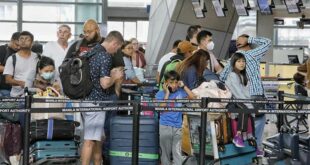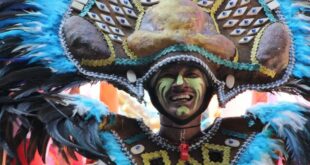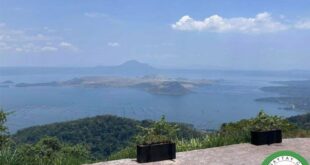
The Philippines has a long history with China that dates back to the pre-colonial era. Today, 25 percent of Filipinos have Chinese ancestry. Seventy-eight percent hail from the Quanzhou administrative region in Southern China, with 89 percent coming from the province of Fujian.
Migration wasn’t always easy for the Chinese, something that has resulted in families being separated, with members giving up hope of ever finding each other. But thanks to Eduardo “Ed” dela Cruz, some Chinese Filipino (Chinoy) families are being reunited with their Mainland Chinese relatives and vice versa. Dela Cruz is a genealogist, though he prefers to call himself a “relative finder.”
The hobby of this IT professional started in 2003, while still in college, when he decided to discover his Chinese roots, as his maternal great grandfather was a first generation migrant. He succeeded in finding and reconnecting with his relatives, and it wasn’t long before word spread among his network in Samar, where he is from. He and his team of volunteers have been tracking down long-lost relatives ever since, without having to leave the Philippines.
Chinoys can be very cautious, and trust is very important. Because Dela Cruz’s services get around by word of mouth, and because he doesn’t charge, he’s become a name in Chinoy circles, particularly in Samar.
The process can be fairly simple: A person looking for their relative messages the Relative Finder (RF) page on Facebook and they are interviewed before the case is accepted. “We filter and… interview those joining to make sure they have good intentions knowing that Facebook is not that secure,” he said.
“[The] quickest way is for them to give us a picture of the grave marker… [with] Chinese characters,” Dela Cruz said in Taglish, explaining that these usually have the deceased’s hometown inscribed on them. “You cannot find that in any Filipino or Western practice… it’s a way for their spirit to go back to their ancestral home.”
He added, “If they don’t have that, then we ask if they are old letters or pictures from China. And then if they don’t have old letters or pictures, then we do interviews. Maybe they recall their grandparents telling them stories.”
And if even that isn’t available, “we ask ‘Who is your nearest kin?’ If we are able to find their ancestral roots, then we can also find their ancestral village because in China, most of the ancestral villages there [house] the same surname, same clan until now.”
The research is done through the help of a network of volunteers in the Philippines and in Fujian, all of who Dela Cruz has helped before. The core group is composed of four people—three in the Philippines and one in China. In the Philippines, Dela Cruz is joined by Tacloban-based business owner Edward Lim, and Bicol-based seafarer Anthony Esteviel.
When asked how he funds his research, Dela Cruz replied, “Through my day job.”
Dela Cruz and his team of volunteers are modern-day sleuths. “It’s really like detective work. We get to be creative.”
He narrated a story of finding a relative with just one photo of a funeral procession to go on. “We only had a 1960s picture of the funeral, but I was able to trace it through zooming into the plate number of the funeral car. And then we went through the records of the Manila Chinese cemetery and were able to easily locate the grave.”
The best part of the hobby is –“each time we got a successful find.”
“They would have physical reunions and they would send pictures, videos, feedback to us, and you cannot exchange that for anything financial. It’s a big reward for us,” he said.
When asked how many families Dela Cruz and his team have reunited, he answered, “We stopped counting… at 60.”
RF has also been engaged in what he called “proactive searches” since 2017.“…we discovered migration patterns of specific surnames… We’ve started documenting specific surnames and which village they came from in China because we noticed… in every family there’s always [someone looking for their roots]… And in this day and age, those who know or are able to tell stories, it’s either they’re already dead or they’re getting senile… So that’s why [we] are doing proactive documentation right now so that the future generation will have something to go back to.”
The search has expanded to providing details on ancestral villages to folks with the same surname as a way of connecting them with their roots via Facebook groups.
One thing that surprised him is the number of Chinese with Filipino blood in China, especially in Jinjiang City in Fujian. “I think there’s not much… about them being told. We’ve…identified around 50-plus children of Filipina mothers and Chinese fathers who were sent to China and were not able to go back… There are stories as well of Filipina mothers who were sent to China and who weren’t able to return to the Philippines. That’s how interrelated we are with each other.”
Dela Cruz’s unusual hobby has led him to realize many things about humanity: “Basically, we’re one family. Right now, we see a lot of tensions in the West Philippine Sea. I think if we have better communication and understanding of where the other side is coming from, I think it would help ease these tensions. I guess, having person-to-person [and] family-to-family communication, we realize that we are very related to each other.”
*****
Credit belongs to : www.mb.com.ph
 MaharlikaNews | Canada Leading Online Filipino Newspaper Portal The No. 1 most engaged information website for Filipino – Canadian in Canada. MaharlikaNews.com received almost a quarter a million visitors in 2020.
MaharlikaNews | Canada Leading Online Filipino Newspaper Portal The No. 1 most engaged information website for Filipino – Canadian in Canada. MaharlikaNews.com received almost a quarter a million visitors in 2020.







